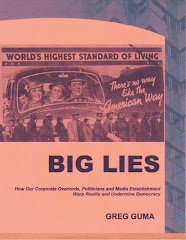For most Vermonters the big stories of the last year were the state's response to Hurricane Irene, which produced the state’s worst natural disaster since 1927, the struggle over closure of Vermont Yankee, and passage of the first-in-the-nation universal health care system. After almost a decade the state had a Democratic governor who pledged to usher in single-payer health insurance and usher out Yankee. Around the country people were rallying to the economic critique of Vermont's popular US Senator, Bernie Sanders.
 |
| Occupying UVM |
Yet in Burlington, where Sanders made his political breakthrough three decades ago, financial trouble at Burlington Telecom, a city-owned enterprise, and a deal with military contractor Lockheed Martin forged by Progressive Mayor Bob Kiss sparked local outrage. By spring there were clear signs of political upheaval ahead.
The larger story of the last year, in the Green Mountains and far beyond, was the sea change in public discourse – from anti-government rage to a radical focus (also angry at times) on economic inequality and concentration of wealth. Conservatives called the new movement class warfare, but it actually reflected an overdue wake up from a long period of mass amnesia.
The pace of change quickened – revolt across much of the Middle East, Greece and other European countries on the verge of economic default, and a titanic struggle for the soul of the US in the presidential race. Many progressives and Democrats were experiencing Obama Fatigue, while among the Republican candidates Mitt Romney had the organization and the money. But Romney was also a member of the 1%, a “vulture capitalist” who seemed to lack core principles.
By early October, from Vermont to San Francisco, thousands were protesting the growing wealth disparity between the rich and almost everyone else. In Burlington, Montpelier and other communities in the state, people began gathering to express themselves and organize. Using social networks and a collective (aka leaderless) approach the Occupy movement spread rapidly to hundreds of US cities, gaining momentum as unions and politicians offered support.
According to a Gallup poll, 44 percent of Americans felt that the economic system was personally unfair to them. More to the point, the top 1 percent had greater net worth than the “bottom” 90 percent. And, in an unusual generational twist, more people under 30 viewed the general concept of socialism in a positive light than capitalism.
The movement’s objective was nevertheless ambitious – to occupy parks, schools, corporate offices, streets, anywhere and everywhere – until something real is done about what the movement defined as economic tyranny. And tyranny is an uncomfortably apt description of the current “world order,” if you can call it orderly except in the capacity to concentrate wealth and power at the top.
On the other hand, some participants sounded shocked at the heavy-handed response in many places, as if they had discovered something new about the relationship between the state and those who dissent. What about Cointelpro, the Palmer Raids and countless other counter-intelligence ops over the years? Others suggested that the new efforts to create self-governing communities represented a breakthrough of paradigm-altering significance. Was this arrogance or just idealism and ambitious goals?
Many in the movement see it as a counterculture, a transformational social experiment. In order to succeed, they argue, it needs to remain separate and uncompromised by the dominant culture. One problem identified last fall was that to fully participate in its non-hierarchical, consensus-based process people had to make it a central part of their lives. This posed a problem for those with limited free time.
As protesters chanted "We are the 99%” the local elections began in Burlington. At a Democratic debate two days after declaring his run for mayor, State Sen. Tim Ashe, once a Progressive member of the City Council, proposed fusion with Democrats to defeat the Republican challenge. But there were three other candidates and one, Miro Weinberger, a housing developer angry about how the city had been managed under a Progressive Mayor, Bob Kiss, thought he was best qualified for the challenges.
In late October activists launched an ongoing encampment at City Hall Park. As long as some basic rules were followed Mayor Kiss signaled that he was prepared to be flexible. Things went fairly well at first, in contrast with violent confrontations between police and protesters elsewhere. But an impromptu concert sparked relaxation of normal restrictions and the next day some people were still intoxicated, including a 35-year-old homeless man.
Joshua Pfenning’s death from a self-inflicted gunshot wound was traumatic, especially for those who knew him and tried to help. It also abruptly ended the encampment. But General Assemblies have continued, while dozens of working groups develop the movement’s next phase.
By Thanksgiving almost everyone was talking about the one percent (or 1%, as some prefer), the few with most of the wealth – bankers, oil tycoons, hedge fund managers and the rest. But as filmmaker Robert Greenwald pointed out, there is an even smaller elite – the top 0.01 percent, wealthy military contractor CEOs.
That made the embrace of Sandia Laboratories and Lockheed Martin by Vermont’s progressive leaders, including Sanders, somewhat perplexing. On military funding and partnerships with defense corporations, otherwise vocal critics of the 1% and military-industrial complex made much the same arguments as other members of Congress.
 |
| Shumlin and Sanders push Smart Grid |
Although Lockheed ultimately backed out of its climate change agreement with the city – at least partly in reaction to public pressure – Sanders succeeded in attracting Sandia, which is managed by Lockheed for the Department of Defense. The result is a multi-million dollar satellite lab at UVM to usher in Smart Grid metering, announced at a December press conference with gov. Peter Shumlin.
Along with Senator Pat Leahy and Congressman Peter Welch, Sanders also supported the prospect that Lockheed-built F-35s might be bedded at the Burlington International Airport. If the plane was going to be built and deployed, he argued, Vermont should get a share of the manufacturing jobs and support for its National Guard.
On the other hand, he continued to fight for working people and speak out strongly during the year against economic inequality and corporate personhood. Momentum grew for Town Meeting and legislative action on a Constitutional Amendment to declare that money isn't speech and corporations aren't people. A state legislative resolution introduced by Sen. Virginia Lyons, the first of its kind in the country, has a decent chance of passage. It proposes “an amendment to the United States Constitution that provides that corporations are not persons under the laws of the United States.”
In December, local Democrats reconvened their caucus – it stalled in November after three rounds – and nominated Weinberger, the political newcomer. Two days later Republican Kurt Wright, a state legislator with more than a decade of experience on the City Council, launched his campaign. The emerging dynamic pitted an experienced insider downplaying his conservative approach against a neophyte outsider with business expertise – at a time when the city faces difficult choices.
The shape of the race shifted again with the entry of Independent Wanda Hines. An African-American organizer who works for the city, Hines filled the vacuum created by the Progressive Party’s indecision and division. On Jan. 22 local Progressives opted not to run a mayoral candidate this year, but may still endorse one of those running.
Major questions loom as Town Meeting Day approaches. For example, will voters at Town Meetings send a strong message on corporate control of the political process by recommending a Constitutional Amendment? And will the state legislature act? How can the progressive movement deal with the recent damage to its local brand? Could Vermont’s liberal city actually elect a Republican who thinks selling the municipal electric department is the preferable way to reduce the city’s debt?
Beyond the Queen City, with a federal judge ruling on Jan. 20 that federal authority trumps Vermont law -- meaning that Vermont Yankee won't have to close in March and extended legal and regulatory fights lie ahead -- how will activists and the public respond?
And one more: Will the 99% movement for economic justice and economic democracy that emerged so dramatically last year find a way to pose specific questions about the limits of corporate influence, turning its potential and aspirations into an inspiring and practical vision?
Summing up a year, in Vermont or beyond, can become a superficial or even misleading exercise. But who could ignore the signs of change last year as the Tea Party’s no-nothing rejectionism gave way to a global outcry against economic unfairness and corporate exploitation? That much at least was obvious, and not a bad way to wake up and get ready of 2012.































